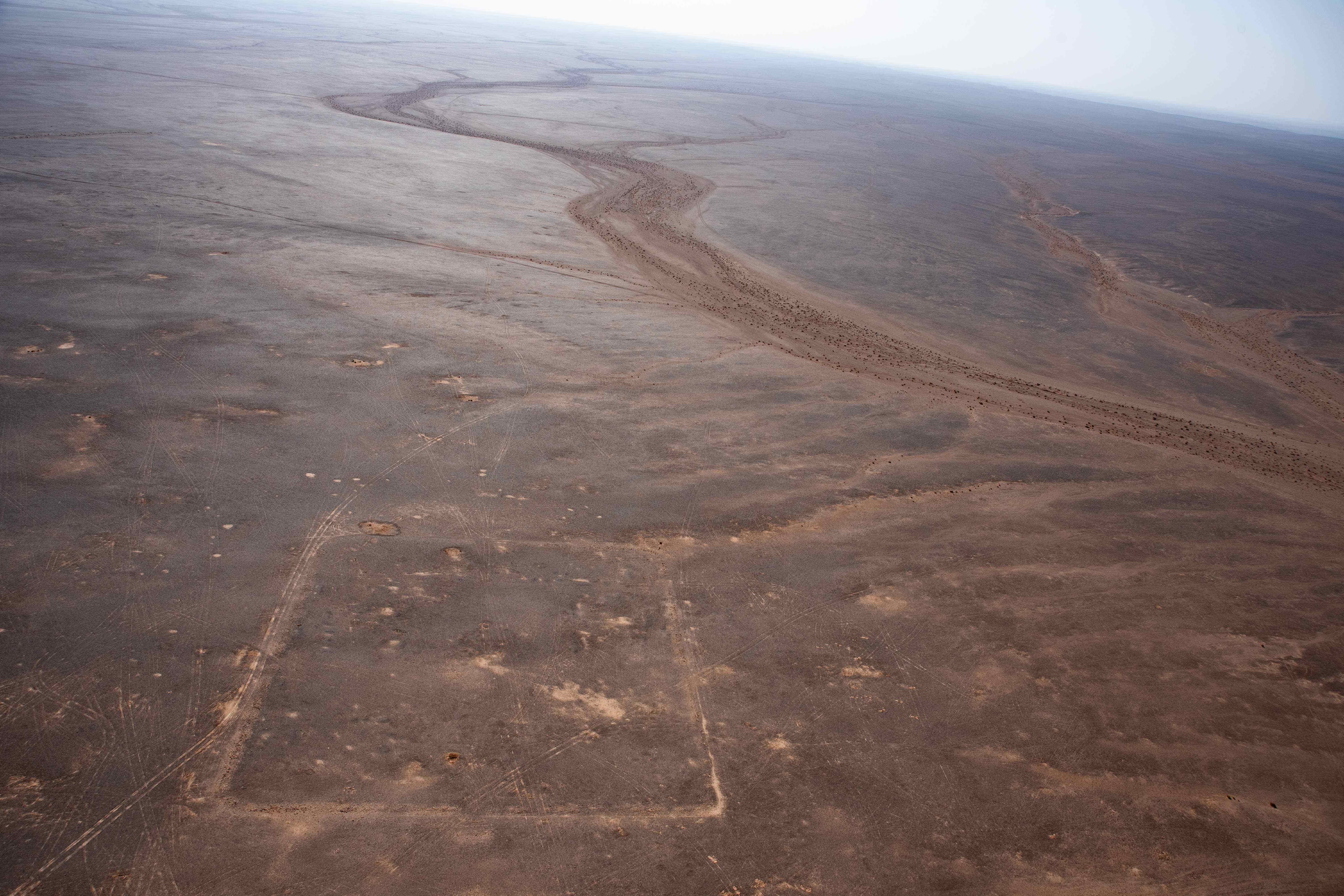Roman military camps identified in Arabian desert in ‘spectacular’ find
The discovery may be evidence of potential surprise attacks during a previously undiscovered Roman military campaign, researchers say.

Your support helps us to tell the story
From reproductive rights to climate change to Big Tech, The Independent is on the ground when the story is developing. Whether it's investigating the financials of Elon Musk's pro-Trump PAC or producing our latest documentary, 'The A Word', which shines a light on the American women fighting for reproductive rights, we know how important it is to parse out the facts from the messaging.
At such a critical moment in US history, we need reporters on the ground. Your donation allows us to keep sending journalists to speak to both sides of the story.
The Independent is trusted by Americans across the entire political spectrum. And unlike many other quality news outlets, we choose not to lock Americans out of our reporting and analysis with paywalls. We believe quality journalism should be available to everyone, paid for by those who can afford it.
Your support makes all the difference.Archaeologists have used satellite images to make a “spectacular” find of Roman military camps in the Arabian desert.
University of Oxford researchers identified three new Roman fortified camps – in the typical playing card shape – across northern Arabia.
The discovery may be evidence of potential surprise attacks during a previously undiscovered Roman military campaign linked to the Roman takeover of the Nabataean Kingdom in 106 AD, a civilisation centred on the city of Petra, located in Jordan.
Dr Michael Fradley, who led the research and first identified the very well preserved camps on Google Earth, suggests there is little doubt about the date of the camps.
Roman forts and fortresses show how Rome held a province, but temporary camps reveal how they acquired it in the first place
He said: “We are almost certain they were built by the Roman army, given the typical playing card shape of the enclosures with opposing entrances along each side.
“The only notable difference between them is that the westernmost camp is significantly larger than the two camps to the east.”
Oxford’s Dr Mike Bishop, an expert on the Roman military, said: “These camps are a spectacular new find and an important new insight into Roman campaigning in Arabia.
“Roman forts and fortresses show how Rome held a province, but temporary camps reveal how they acquired it in the first place.”
The researchers suggest the camps would have been built by the army as temporary defended stations when they were marching on campaign.
Dr Fradley added: “The level of preservation of the camps is really remarkable, particularly as they may have only been used for a matter of days or weeks.
It is amazing that we can see this moment in time played out at a landscape scale
“They went along a peripheral caravan route linking Bayir and Dumat al-Jandal.
“This suggests a strategy to bypass the more used route down the Wadi Sirhan, adding an element of surprise to the attack.
“It is amazing that we can see this moment in time played out at a landscape scale.”
Professor Andrew Wilson, a co-author on the paper, said: “These marching camps – if we are correct in dating them to the early second century – suggest the Roman annexation of the Nabataean Kingdom following the death of the last king, Rabbel II Soter in AD 106, was not an entirely straightforward affair, and that Rome moved quickly to secure the kingdom.”
Because the distance between each camp is 37km to 44km, the researchers speculate it was too far to be crossed by infantry in a day.
Therefore they suggest the camps were instead built by a cavalry unit who could travel over such barren terrain in a single day, possibly on camels.
On the basis of the distance between the camps there is also a suggestion that another camp may have been located further west at the later Umayyad fort and well station at Bayir.
The study sets out that the newly discovered camps run in a straight line towards Dumat al-Jandal in what is now Saudi Arabia, but which was then a settlement in the east of the Nabataean kingdom.
Why does the western camp have twice the capacity of the other two? Did the force split, and if so, where did the other half go?
According to the researchers, the findings suggest Rome had to force its takeover, whereas the surviving Roman history argues the transfer of power was a peaceful event at the end of the reign of the last Nabataean king.
Archaeologists still need to confirm the date of the camps through investigation on the ground, but there are other questions that need to be answered.
Prof Wilson said: “Why does the western camp have twice the capacity of the other two? Did the force split, and if so, where did the other half go?
“Was it half wiped out in a battle, or did they remain in the western camp to resupply the other camps with water?”
The paper is published in the journal Antiquity.